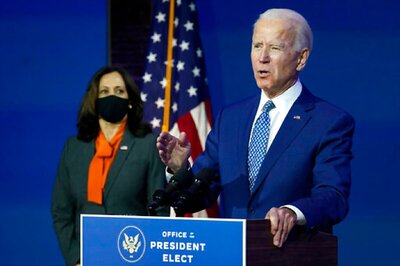
views
Even as the government continues to remain coy on community transmission of coronavirus in the country, Professor Giridhar Babu, an epidemiologist who is also member of the National Task Force Research group, has said that community transmission may have taken place in containment zones of metros as early as May.
This inference, he has drawn, based on the results of the national sero-survey conducted by the Indian Council of Medical Research (ICMR). The survey has shown that as many as 64 lakh Indians had been exposed to COVID-19 by the month of May.
Speaking to News18, Professor Giridhar Babu said that while the survey results do not provide evidence that there was widespread transmission at that stage, but community transmission in containment zones of the metros which had high burden at that time cannot be ruled out. “The unweighted prevalence of IgG antibodies against SARS-CoV-2 was 0.47 per cent in the stratum with zero reported COVID-19 cases when the survey was done. Even in the stratum with high incidence of Covid19, the unadjusted seroprevalence was 0.59 per cent,” he said.
The survey results, published by The Indian Council of Medical Research (ICMR) after a considerable delay, have thrown up some interesting facts about how the virus was circulating in the country in May.
Around 0.73 per cent of the Indian population was exposed to the virus — SARS CoV-2 —amounting to 6.4 million possible undetected infections. The survey sampled 28,000 individuals and IgG antibodies were found using COVID Kavach Elisa Kits.
Contrary to previous understanding, the survey has also shown that the virus was already widespread in rural areas by that time, with 69.4 per cent of population surveyed showing IgG antibodies. The figure stood at 15.9 per cent in urban slums and 14.6 per cent in other urban areas.
The survey also found sero positivity in districts were there were no recorded cases of Covid-19, which means that not testing enough led to cases not being diagnosed. The incomplete data and reporting has also meant that the number of deaths and India’s fatality rate was being underestimated, the ICMR has admitted.
As part of the survey, a total of 30,283 households were visited from 700 clusters in 70 districts across the four strata. About one-fourth (25.9 per cent) of the surveyed clusters were from urban areas. A total of 28,000 individuals consented to participate, the report states.
What is hugely significant is that for every confirmed case of COVID-19, there were 82 to 130 undiagnosed cases, going back as early as May. The survey importantly has noted COVID seropositivity being detected in districts with zero cases. This could be on account of low testing laboratories that could have led to under detection of COVID-19 cases.
“The present findings of seropositivity in the strata of districts with zero to low incidence of COVID-19 cases underscore the need to strengthen surveillance and augment the testing of suspected cases in these areas,” the report adds.
In four of the 15 districts in this stratum, COVID-19 testing laboratories were not available in district headquarters and the samples were transported to the state headquarter hospitals for diagnosis.
The present findings of seropositivity in the strata of districts with zero to low incidence of COVID-19 cases underscores the need to strengthen surveillance and augment the testing of suspected cases in these areas, the survey report said.
The ICMR wants to establish a community-based district-level serosurveillance system to monitor the transmission of SARS-CoV-2 infection in the general population. The initial survey would serve as a baseline to determine the seroprevalence of SARS-CoV-2 infection in the community and in high-burden cities as well, while the subsequent rounds would help to monitor the trends of infection in the community.



















Comments
0 comment